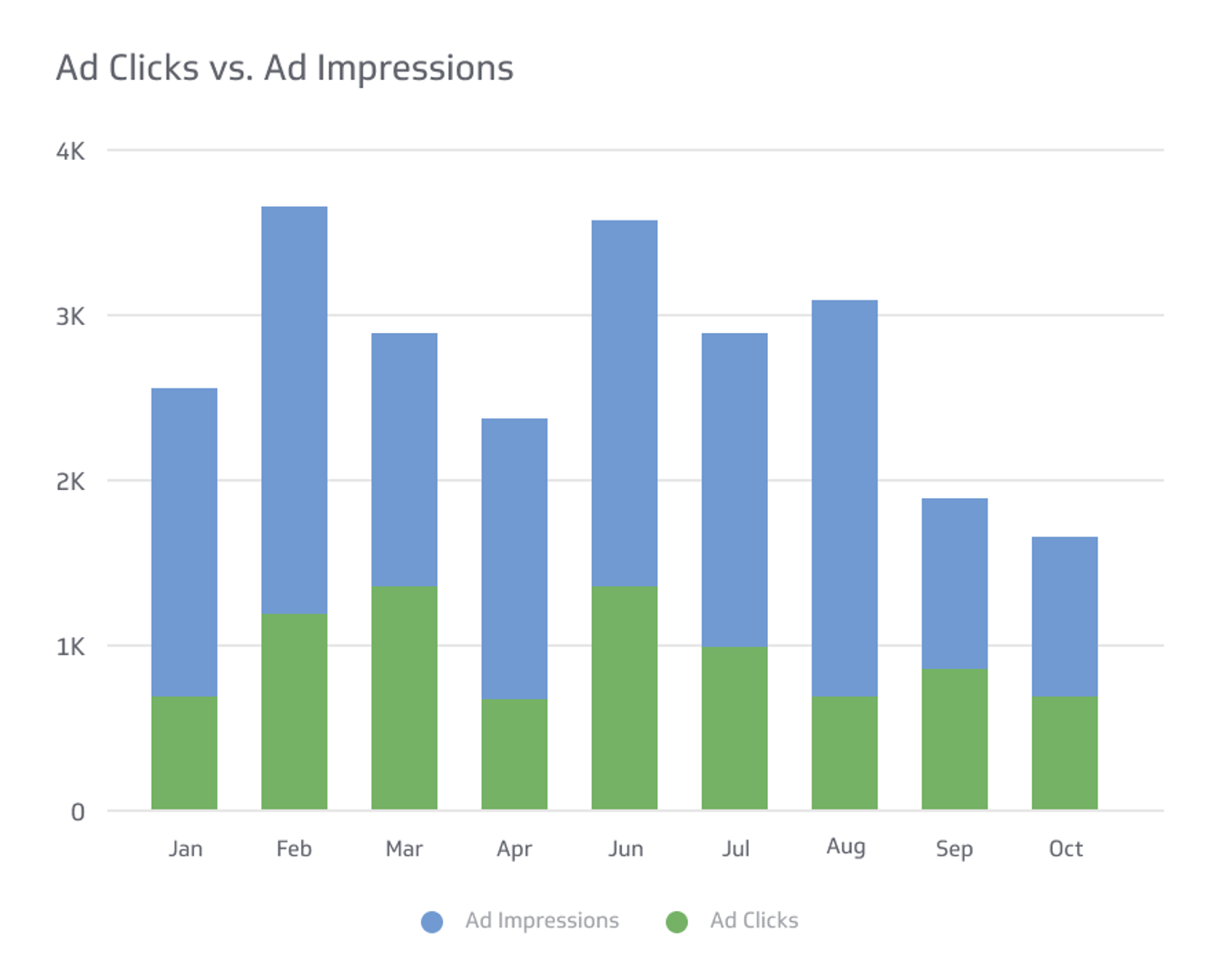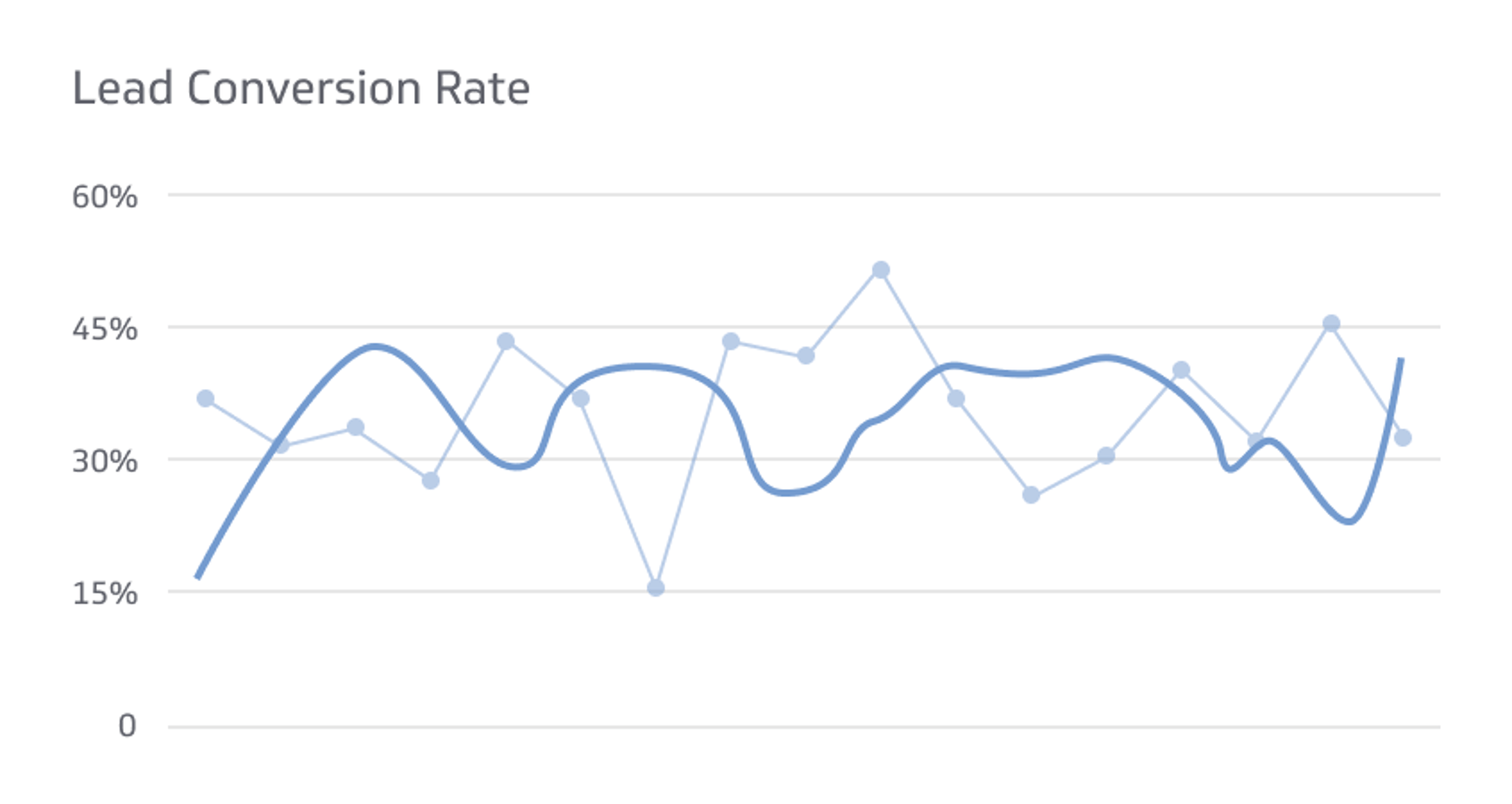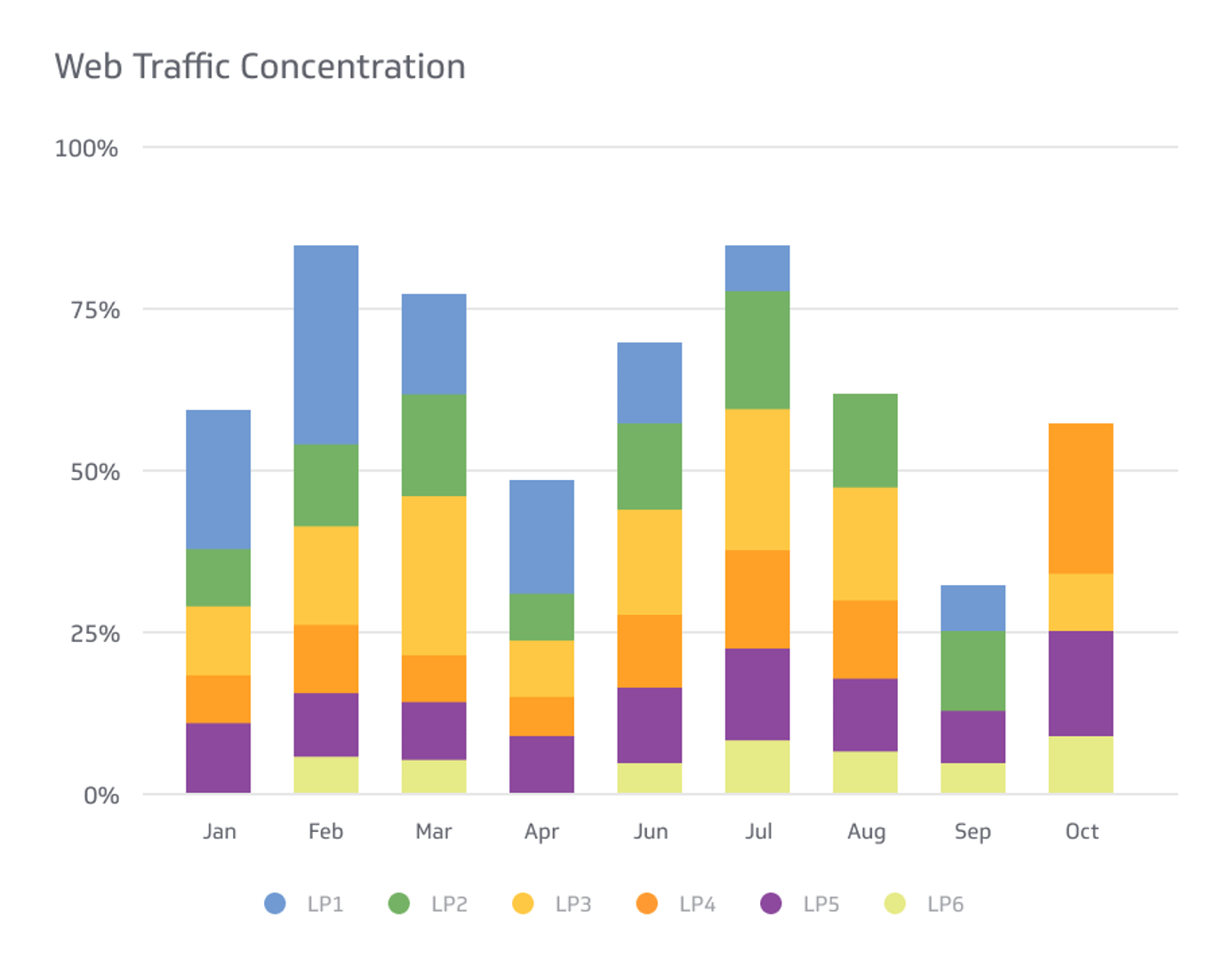Ad Clicks vs Ad Impressions
Knowing the difference between the ad clicks and ad impressions is vital in gauging potential customer interaction and level of motivation.
Track all your Digital Marketing KPIs in one place
Sign up for free and start making decisions for your business with confidence.

Advertising drives much of the “free” content on any website. Those pop-ups, side-bars, and embedded videos and banners on your favorite news, entertainment, or sports site keep the lights on for those who manage the site.
Online advertisements help pay the website bills, making tracking how those advertisements perform critical. Marketers and website managers utilize two tracking metrics: Ad Clicks and Ad Impressions.
Knowing the difference between the two is vital in gauging potential customer interaction and level of motivation. Here are the differences between impressions vs clicks and why you should pay attention to both.
Clicks in Online Advertising
A click is an interaction between a web viewer and an advertisement on the website where the potential customer clicks on the advertisement to be taken to a specific site for a specific reason.
The reasons a person might click on an advertisement are diverse but come down to the need for the person clicking to get more information on the advertiser. The various reasons someone might click on an online advertisement include, but are not limited to:
- Performing research on an organization, product, program, service, or offer
- Purchase a product or service
- General inquiry to discover what the organization does
- Membership in the organization in question
- Communicate with the organization
Why Clicks Matter
There are many ways to gauge the interest of online consumers. Clicks are one of the most effective and accurate methods because an individual clicking on an advertisement, banner, or other form of advertising indicates expressed interest.
A bedrock marketing principle is to get a potential customer to initiate some action that leads to direct communication between them and the organization they are interested in. Clicks perfectly match that description.
A person might be reading a story on CNN.com and see an advertisement for a brand of shoes, the political organization they want to support, or an organization they want to join. They click on the advertisement and get immediate exposure to the product, service, or organization that caught their eye.
In addition, clicks help an advertiser know how effective their marketing program is with their target and test audiences. Advertisers can measure engagement, commitment, and product appeal by tracking clicks from the point of click through the entire engagement.
Clicks as a Metric
Clicks are measured in several different metrics, and each metric helps marketers gauge how well their advertising works and what audiences respond to specific advertisements.
For example, suppose a company runs $1,000 advertisements across news, entertainment, and sports websites. Depending on what sites bring in the greatest number of clicks, a marketer can deduce what audience was most receptive to that form of advertisement.
Additionally, they can determine what advertising resulted in a click that ended in a sale, a request for more information, or the customer pursuing other options.
The general digital marketing metrics that clicks shed light on include but are not limited to:
- Clicks Per Advertising Cost
- Clicks Per Advertising Campaign
- Clicks Per Purchase Per Advertisement
- Clicks Per Purchase Per Advertisement Campaign
Each metric is then used to determine the following:
- Whether to go ahead with more advertising
- Where to focus advertising
- What products or services received interest from what audiences
- What advertising did not work
- Whether it is worth shifting advertising to different sites to test the effectiveness
When deciding to invest in advertising, these metrics provide the advertiser with a solid basis on which to make decisions regarding how much to spend, what to spend it on, and where.
Additionally, those metrics can help decide if more testing is warranted and if testing in other, different markets or websites makes sense.
What Are Impressions
In online marketing and advertising, impressions are created when a person is exposed to an advertisement but does not respond by clicking to take them to the sponsor of the advertisement. They are the number of times your advertisement was put in front of an online audience in the form of banners, links, buttons, or static advertisements for products.
The online exposure to an individual can be in any form of online media, including social media, email, and regular websites count as impressions. So, if your advertisement runs on a major news site, social media like Facebook, and in email, each instance when a user opens the medium is counted as one impression.
Why Impressions Matter
With each online advertisement campaign, you pay for a certain amount of exposure. That exposure is measured by how many impressions an advertisement or advertisement campaign collects over the course of its running. In many respects, impressions are equal to mass media advertising done on radio and television.
Impressions are Age-Old Media Advertising in a New Form
With those forms of advertisements, the assumption is not that everyone will run out and buy a Chevy truck because they saw an advertisement for one. The purpose of the advertisement is to prompt an action, such as test driving a truck or buying one from some viewers, but for most, what the advertiser wants is exposure.
The calculation in this type of advertising is that exposure to hundreds of thousands or millions of viewers or listeners will result in three things:
- Direct sales from people prompted by the advertisement
- A positive impression of the organization, product, or service in general
- Remembering the organization, product, or service at some point in the future
The benefit of the first result is obvious. The benefit of the second is great public relations and a potential customer having a good feeling about the organization, product, or service, which can lead to referrals and purchases.
For the third result, the hope is that when the viewer or listener decides to buy or engage with what the advertiser is promoting, they will go to that organization because of the advertisement. The next time the viewer or listener is interested in buying a truck, they will remember the Chevy truck commercial and at least give Chevy serious consideration.
Impressions as a Metric
When evaluating impressions, advertisers will focus on how many people were exposed to an advertisement and how many converted to clicks versus the cost of the advertising. Using the example above, an advertiser would look at the following:
- Number of potential online customers that were exposed to advertising
- Average cost of the advertising per impression
- Average cost of the advertising per click conversion
- Average cost of the impression per thousand dollars invested
These measurements can help decision-makers formulate advertising, marketing, and spending plans based on exposure. Whereas clicks are viewed per interaction, impressions are analyzed across all websites on the broader exposure stage.
Clicks and Impressions Work Together
When looking at impressions vs clicks, it is important to remember that while each tells an advertiser different things, both work in tandem. Impressions help get a product greater exposure to a larger market; clicks measure how well that engagement converts to active interaction.
Both present a full picture of the effectiveness of an advertisement and campaign.
Related Metrics & KPIs



